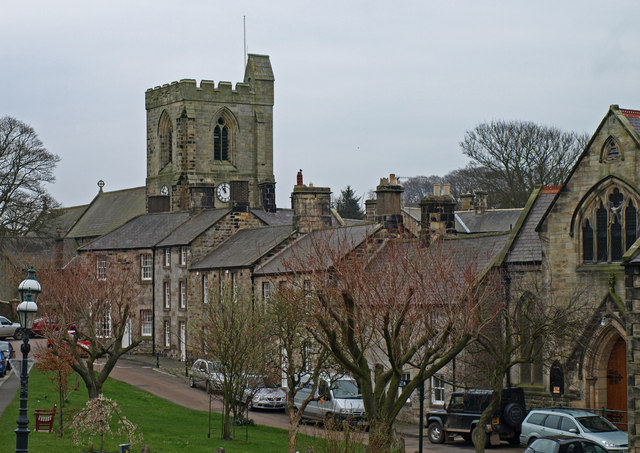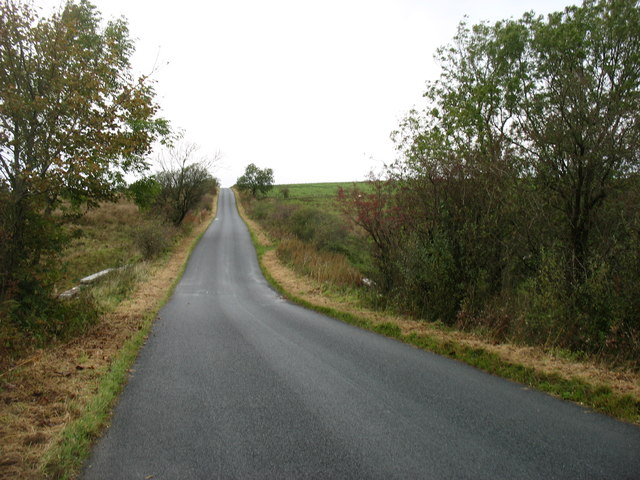Topics > Northumberland > Civil Parishes in Northumberland > Rothbury Civil Parish
Rothbury Civil Parish
Parish boundaries changed in 2011, when parts of Cartington CP, including Cragside and Debdon, were absorbed into Rothbury CP - the above map shows the bondaries before ths change. For the latest map see the Parish Council or Northumberland County Council.
About the Parish
Rothbury Civil Parish in Northumberland contains the market town of Rothbury and it's surounding area, including the Cragside estate and the hamlets of Thrum Mill and Pondicherry. The town is situated on the banks of the River Coquet.
| Settlements: | |
| Population: |
2,022 (2021 Census) 2,107 (2011 Census) 1,740 (2001 Census) |
| Area: | 3.9 km2 |
| Parish Council: |
Rothbury Parish Council |
| Unitary Authority: | Northumberland County Council |
Historical |
|
|
Ancient Townships: (in the modern CP area) |
Population: 668 in 1801, and 895 in 1851. Townships became civil parishes in their own right in 1866 (see below). |
| Ancient Parishs: |
The ancient parish covered a much larger geographical area than the modern civil parish of Rothbury. As well as the township Rothbury it included the townships of Bickerton, Caistron, Cartington, Debdon, Fallowlees, Flotterton, Hollinghill, Hepple, Hepple Demesne, Hesley-Hurst, Lee-Ward, Mount-Healey, Newtown, Paperhaugh, Raw, Snitter, Thropton, Great Tosson with Ryehill, Little Tosson, Trewhitt, Warton, Whitton, and Wreighill. Population: 2,236 in 1801, and 2,545 in 1851. Gazetteers:
Ancient parishes refer to the parishes before the split between ecclesiastical (church) and civil parishes in the 19th century. They had a parish church and often were composed of multiple townships and chapelries. In many cases, townships and parishes were originally based on the territory of manors from the feudal system during medieval times. Civil parishes were created following the Poor Law Amendment Act 1866, in which Church of England parishes, extra-parochial areas, townships and chapelries, became "civil parishes" which could set their own poor rate (tax). Then the reforms of Local Government Act 1894 established elected civil parish councils (or parish meetings for parishes with less than 300 residents) and created urban and rural districts. Boundaries of parishes and civil parishes may have changed over time. |
| Ancient District: |
Coquetdale (ward) |
| Poor Law Union: |
Rothbury Poor Law Union, formed in 1836. Rothbury Poor Law Union used the existing workhouse at Town Foot at the east of Rothbury. A new workhouse at Silverton Lane in Rothbury opened in 1901, which could house up to 50 inmates. Under the Poor Law Amendment Act of 1834 parishes were grouped into Unions, each of which had to build a workhouse if they did not already have one. It ended the old system of locally provided poor relief which had come under strain as numbers out of work grew, following increasing mechanisation of agriculture and the economic downturn after the Napoleonic Wars, along with changing social attitudes. The workhouse provided those unable to support themselves financially with accommodation and work. Inmates were generally segregated into men, women, boys and girls. The workhouse system was abolished by the Local Government Act 1929, but many workhouses lived on as ‘Public Assistance Institutions’ until the National Assistance Act 1948. |
|
District Council: |
Rothbury Urban District (1899 - 1935) Rothbury Rural District (1935 - 1974). The district was abolished in 1974, following the Local Government Act 1972. Alnwick District (1974 - 2009). Alnwick covered the area of 4 former districts (Alnwick Urban District, Amble Urban District, Alnwick Rural District, Rothbury Rural District). The borough council was abolished when Northumberland County Council became a unitary authority on the 1st of April 2009. |
|
County / Unitary Authority |
The ancient county of Northumberland was enlarged following the Counties (Detached Parts) Act 1844; Bedlingtonshire, Norhamshire, Islandshire, the Farne Islands and Monks' House all became part of Northumberland. Up to then they had been enclaves of County Durham. Northumberland County Council formed 1889. Major boundary changes came into effect on the 1st April 1974. This followed the Local Government Act 1972, which formed the non-metropolitan county of Northumberland. This excluded the City of Newcastle upon Tyne and North Tyneside, which up to then had been part of Northumberland, but now became part of the newly formed Tyne & Wear. Northumberland County Council became a unitary authority on the 1st of April 2009. |
|
Major Boundary Changes |
In 2021, Rothbury was extended by gaining parts of Cartington Civil Parish, including Cragside. Cartington Civil Parish was abolished after a Boundary Review, following proposals to amalgamate the parish between Rothbury and Thropton Parish Councils. |
See also: ![]() Historic Buildings and Monuments in Rothbury. Note: listed buildings are generally the responsibility of the county council / unitary authority, rather than the parish council.
Historic Buildings and Monuments in Rothbury. Note: listed buildings are generally the responsibility of the county council / unitary authority, rather than the parish council.

from https://www.rothburyparishcou…
Rothbury Parish Council
- "Rothbury is a small market town set on the banks of the River Coquet in Northumberland, and although technically a town, everyone still tends to call it a village. It …
Added by
Simon Cotterill

Co-Curate Page
Rothbury
- Overview Further Information Map Street View Rothbury is a traditional market town which straddles the River Coquet. It is located in central Northumberland just over 13 miles noth west of …

Co-Curate Page
Cragside
- Overview About Cragside Map Street View Cragside was the country house and estate of industrialist Lord William Armstrong and Lady Margaret Armstrong. It was the first house in the world …

Co-Curate Page
Thrum Mill
- Overview Map Thrum Mill is a hamlet on the north banks of the River Coquet, just west of Rothbury. The water mill here dates from the 18th century, probably on …


from https://www.rothburyparishcou…
Rothbury Parish Council
- "Rothbury is a small market town set on the banks of the River Coquet in Northumberland, and although technically a town, everyone still tends to call it a village. It …
Added by
Simon Cotterill

Co-Curate Page
Rothbury
- Overview Further Information Map Street View Rothbury is a traditional market town which straddles the River Coquet. It is located in central Northumberland just over 13 miles noth west of …

Co-Curate Page
Cragside
- Overview About Cragside Map Street View Cragside was the country house and estate of industrialist Lord William Armstrong and Lady Margaret Armstrong. It was the first house in the world …











